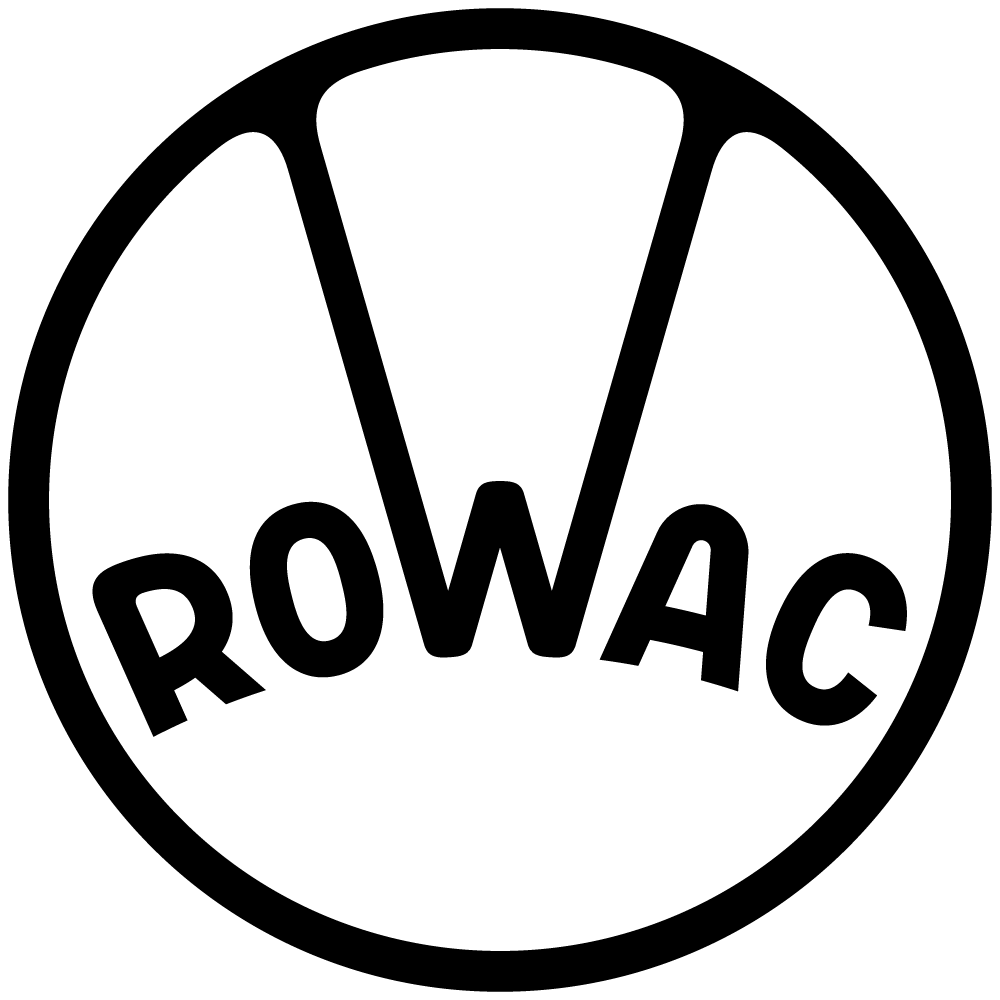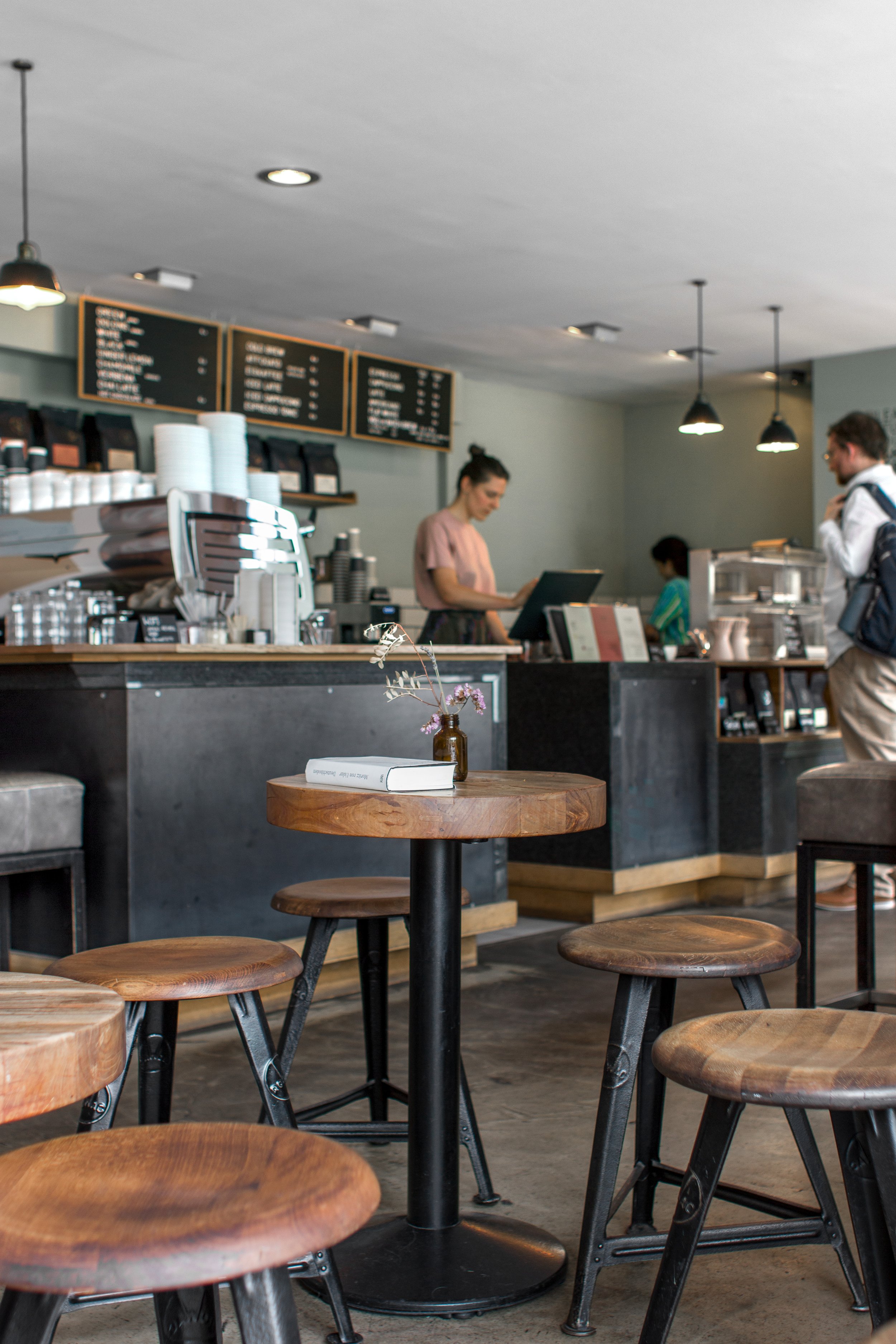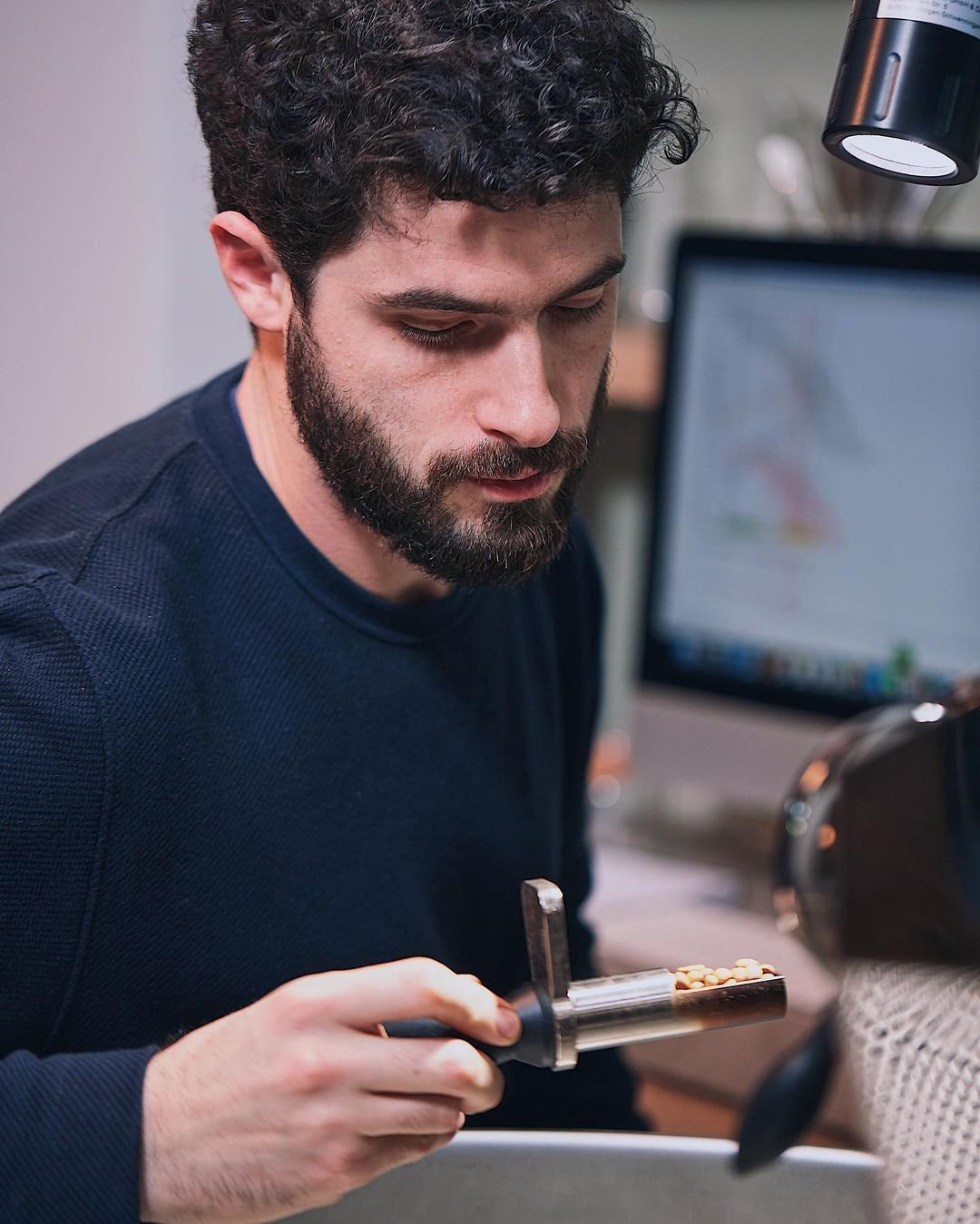Philip Feyer from Jonas Reindl Coffee Roasters
“It fascinates me how much Rowac furniture can withstand.”
Portrait by Max Manavi-Huber
You’re known as the Jonas Reindl Coffee Roasters. How did the name come about?
The joke is that many people think I' m Mr. Reindl. But in fact, the tram and metro station close to the café is a major hub in Vienna, built by the then mayor of Vienna and later president of Austria, Franz Jonas. Since it resembles a “Reindl” (= pan) when viewed from above, it was named - almost somewhat mockingly - the Jonas Reindl and was considered a Viennese nickname for the whole area here. It’s always nice to tell this story.
This way you also create a connection to Vienna, even though you're not a typical Viennese café.
Yes, that was important to me at the time. On the one hand, I wanted to signal that we were doing something international, rather unusual for Vienna, and on the other hand that there was a Viennese behind the café.
The first of your cafés is furnished with Rowac schemel and chairs. How did that come about?
I think Rowac furniture just fits our overall concept really well: We pay attention to sustainability in everything we do. I'm fascinated by the fact that Rowac furniture, despite its age and heavy use - especially in our café - can withstand so much and still sometimes even look like new.
What specifically sets you apart from other coffee roasters?
I would say that all specialty coffee roasters have a similar concept. Transparency, sustainability, high-quality coffee beans and good working conditions for the farmers all play big roles. We in particular, of course, set ourselves apart from the rest of the market with our own roasts, whereby we tend to offer light roasts in order to preserve the flavour of the bean as much as possible.
Special coffees often mean more work and risk for the farmers. Can you elaborate on this?
Yes, that's true. But higher risks also conceal greater opportunities. Meaning we pay much higher prices for these high-quality coffees while making sure to engage in direct trade. Many people don't know that the cultivation altitude of very high quality Arabica is extremely high. Often the route to such a farm leads through a jungle on foot or by donkey. On top of that, everything done there is real manual labour, because the farmers can't use tractors on the steep slopes. But this hard work also means a better product, from which the farmers earn more. We also give the farmers more security by frequently buying the entire harvest in advance.
Alongside the hard work, there is also the hidden art of unlocking the full potential of the coffee. What's behind it all?
Compared to an average coffee roaster, we offer a wide variety of coffees from 9 different countries. They’re all pure varieties, with which we want to show how different coffees can taste depending on where they come from. For example, a coffee from Ethiopia tastes very different from a coffee from Panama. In the mainstream coffee industry, a distinction is often only made between Arabica and Robusta, but the country of origin is not disclosed to the end consumer. With us, the customer can trace the coffee all the way back to the farm.
Paintings by Isabell Schaffer are currently hanging in your café. What is the story behind them and do you regularly work with artists?
Yes, that was an idea of mine that has proved very successful. We’ve created a changing gallery with art and photography in our cafés, by presenting a different artist every 3-4 months. This creates an interesting variety for our customers, which brings in a breath of fresh air. And for me, this also means contact with unique personalities, such as photographers and artists.











